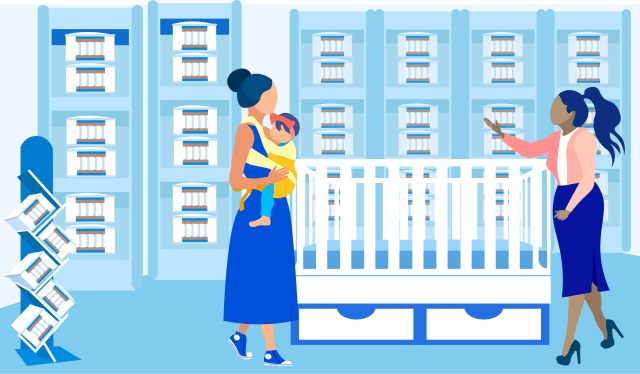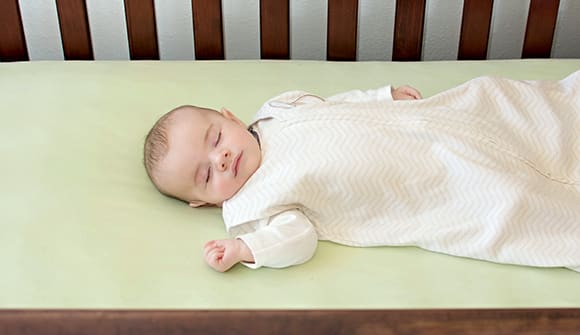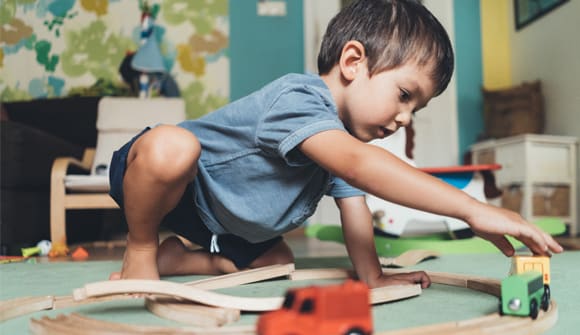Welcome to my crib
Rest easy knowing your new baby is snoozing in a secure space.
Article Author: Katie McPherson
Article Date:

For new or soon-to-be parents, choosing a crib can feel a little overwhelming. Of course, you want it to match the nursery and also give baby room to grow. There are so many crib options on the market, but you can rule out a few if you prioritize one thing: safety.
Jessica Winberry, prevention coordinator at Safe Kids Northeast Florida and health educator for THE PLAYERS Center for Child Health at Wolfson Children’s Hospital, said safe sleep should be parents’ No. 1 priority when crib shopping. She recommends you check any cribs you’re considering against some online databases to ensure they’re expert-approved.
“Cribs, bassinets and portable sleepers need to meet the safety standards of the Consumer Product Safety Commission (CPSC). Families can look to the CPSC for guidance on any cribs they may want to purchase. Many products are also certified by the Juvenile Products Manufacturers Association (JPMA).”
Whether you’re looking at cribs in person or online, Winberry recommends making a checklist of features your baby’s crib should (or should not) have:
- A firm, tight-fitting mattress so a baby cannot get trapped between the mattress and the crib.
- No missing, loose, broken or improperly installed screws, brackets or other hardware on the crib or mattress support.
- No more than 2 3/8 inches (about the width of a soda can) between crib slats so a baby's body cannot fit through. There should be no missing or broken slats.
- No corner posts over 1/16 of an inch higher than the rest of the crib’s top rail so a baby's clothing cannot catch.
- No cutouts in the headboard or footboard so a baby's head cannot get trapped.
With all of this in mind, you can find the perfect crib for your nursery décor and your newborn’s well-being. Winberry adds parents should not use sleeping pillows, swings or other products in place of a crib — doing so has been linked to sleep-related injuries (and worse).
Once you finally get your crib home and put together, be sure to keep an eye out for any papers or cards inside the packaging. You’ll need to register your new crib so the manufacturer can contact you if need be.
“Parents should always fill out and send in the product registration card,” said Winberry. “This allows them to be notified of any recalls, big or small, related to the crib or bassinet. You can often register your items online as well.”
Those first weeks of parenthood can be overwhelming, and it’s easy to forget all the safe sleep guidelines when you’re sleep-deprived yourself. For easy access to safe sleep tips, visit wolfsonchildrens.com/sleep.



